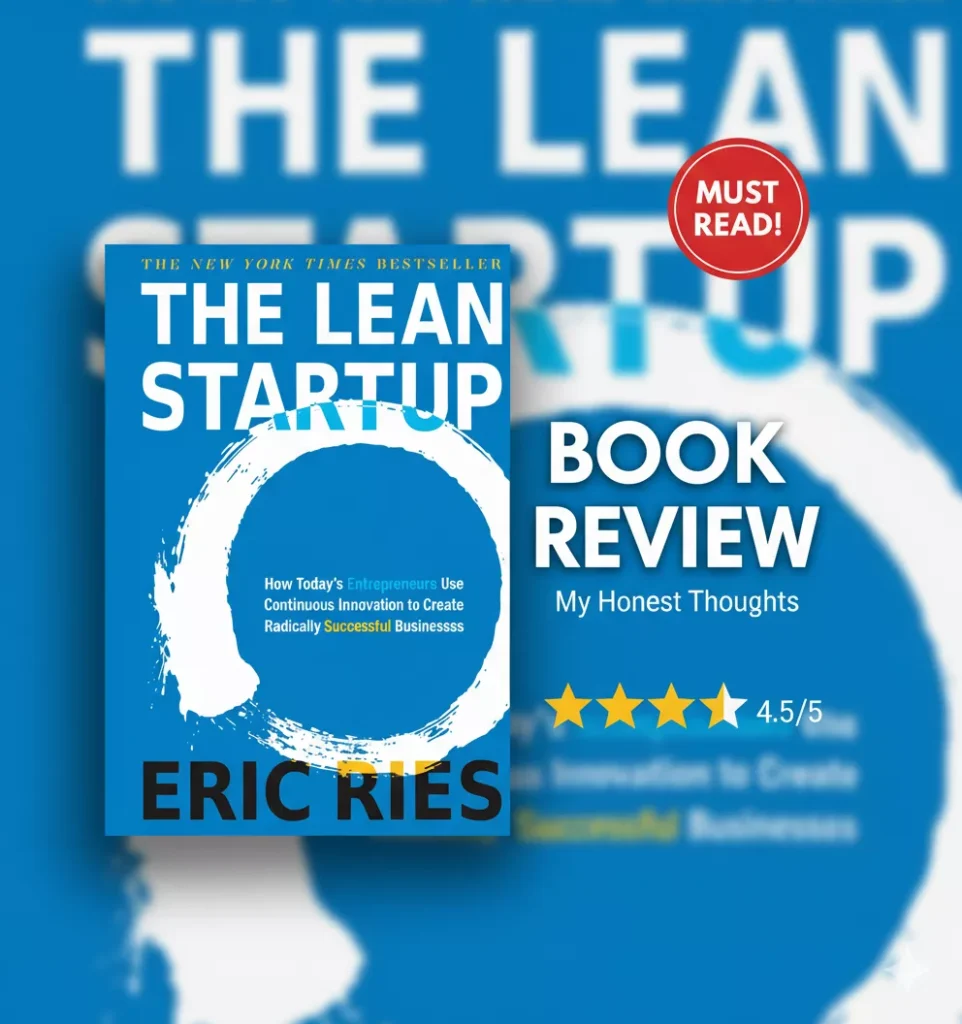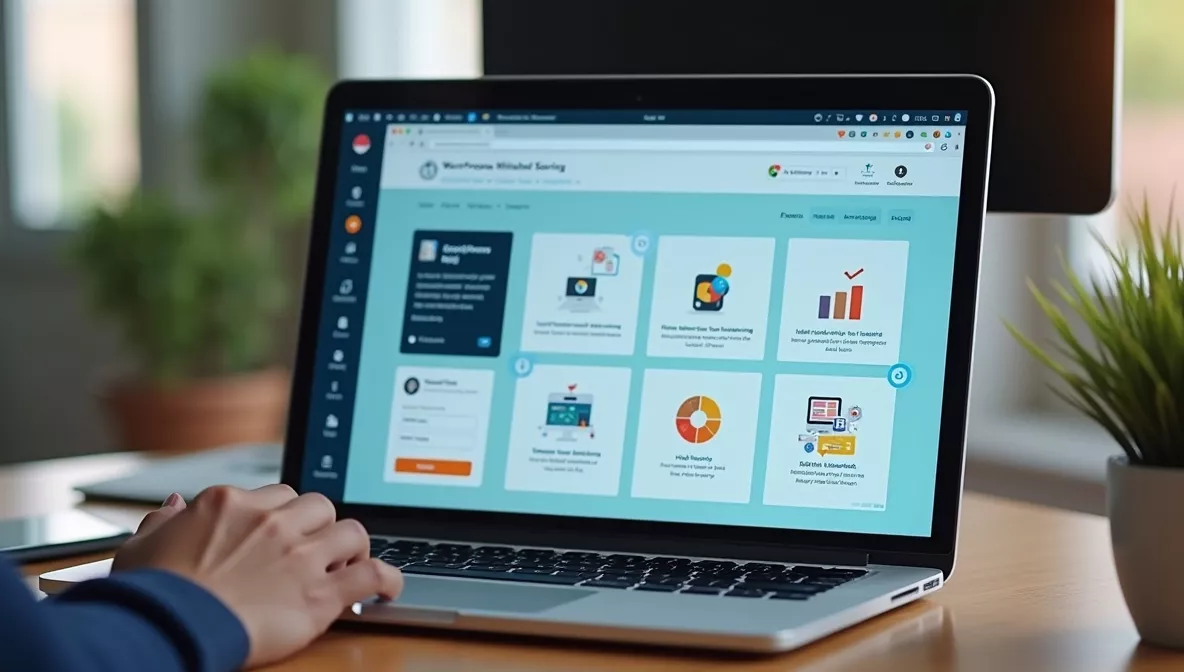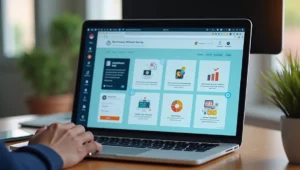क्या आपका भी कोई business idea है जो दिमाग में घूम रहा है?
- Lean Startup क्या है? (What is Lean Startup?)
- Traditional Business vs Lean Startup Approach
- पुराना तरीका (Traditional Way):
- Lean Startup का तरीका:
- 💖 You Might Also Like
- Build-Measure-Learn Cycle की Power
- Build (बनाना):
- Measure (मापना):
- Learn (सीखना):
- MVP (Minimum Viable Product) की Magic
- MVP के Examples:
- MVP बनाने के फायदे:
- Validated Learning: Data-Driven Decisions
- Validated Learning के Steps:
- Real Example:
- ✨ More Stories for You
- Pivot: Direction Change करने का Art
- कब करें Pivot:
- Types of Pivots:
- Famous Pivot Examples:
- Innovation Accounting: Startup के लिए नया Math
- Key Metrics जो Track करने हैं:
- Vanity Metrics vs Actionable Metrics:
- Continuous Deployment और Rapid Testing
- Fast Deployment के Benefits:
- Testing Strategies:
- 🌟 Don't Miss These Posts
- Customer Development Process
- Customer Development के 4 Steps:
- Customer Interview Tips:
- Lean Startup Implementation: Practical Steps
- Step 1: Vision Define करिए
- Step 2: Assumptions List बनाइए
- Step 3: MVP Design करिए
- Step 4: Build-Measure-Learn Cycle Start करिए
- Step 5: Iterate या Pivot
- Common Mistakes और उनसे कैसे बचें
- Mistake #1: Perfect Product बनाने में time waste करना
- Mistake #2: Vanity metrics को chase करना
- Mistake #3: Customer feedback को ignore करना
- Mistake #4: Pivot करने में hesitation
- Mistake #5: Scale करने की जल्दी
- Success Stories: Lean Startup in Action
- Case Study 1: Groupon
- Case Study 2: Zynga
- Case Study 3: Intuit
- Lean Startup Tools और Resources
- Essential Tools:
- Books for Further Reading:
- FAQs
- Lean Startup सिर्फ tech companies के लिए है?
- MVP बनाने में कितना time लगना चाहिए?
- क्या हमेशा customer feedback follow करना चाहिए?
- Pivot करने का सही time कब है?
- Lean Startup और traditional business planning में क्या difference है?
- Final Thoughts: अपना Lean Startup Journey शुरू करिए
या फिर आप already कुछ शुरू करने की सोच रहे हैं लेकिन डर लग रहा है कि कहीं पैसा बर्बाद न हो जाए?
मैं आपको Eric Ries की The Lean Startup book की summary दे रहा हूं जो literally हजारों entrepreneurs की जिंदगी बदल चुकी है।
Lean Startup क्या है? (What is Lean Startup?)
Lean Startup एक methodology है जो आपको सिखाती है कि कैसे कम से कम resources के साथ एक successful business बनाया जाए।
यह तीन main principles पर based है:
- Build-Measure-Learn का cycle
- Minimum Viable Product (MVP) बनाना
- Validated Learning से decisions लेना
Eric Ries ने इस approach को इसलिए develop किया था क्योंकि उन्होंने देखा था कि 90% startups fail हो जाते हैं।
और सबसे बड़ी वजह यह थी कि लोग months या years spend करते थे perfect product बनाने में, बिना यह जाने कि customers को वो चाहिए भी है या नहीं।
Traditional Business vs Lean Startup Approach
पुराना तरीका (Traditional Way):
- पहले detailed business plan बनाना
- Market research में months लगाना
- Perfect product develop करना
- Launch करके देखना कि क्या होता है
- अगर fail हो गया तो सारा पैसा गया
Lean Startup का तरीका:
- जल्दी से simple version बनाना
- Real customers से feedback लेना
- उस feedback के basis पर improve करना
- छोटे experiments करना
- Fail fast, learn fast का approach
मैंने personally इस method को use किया है और trust me, यह काम करता है।
💖 You Might Also Like
Build-Measure-Learn Cycle की Power
यह cycle Lean Startup का दिल है।
Build (बनाना):
सबसे पहले एक simple version बनाइए अपने idea का। यह perfect नहीं होना चाहिए। बस इतना हो कि customers इसे try कर सकें।
Measure (मापना):
अब देखिए कि customers कैसे react कर रहे हैं। Numbers collect करिए:
- कितने लोग आए
- कितने लोगों ने actually use किया
- कितने लोगों ने पैसे दिए
- क्या feedback मिला
Learn (सीखना):
Data को analyze करिए। समझिए कि क्या काम कर रहा है और क्या नहीं। अगली strategy decide करिए।
फिर से Build करिए, Measure करिए, Learn करिए।
यह cycle तब तक चलाते रहिए जब तक आपको सही formula नहीं मिल जाता।
MVP (Minimum Viable Product) की Magic
MVP का मतलब है सबसे basic version जो still valuable हो customers के लिए।
MVP के Examples:
- Dropbox ने सिर्फ एक video बनाया था feature demonstrate करने के लिए
- Zappos के founder ने shoe store खोलने से पहले local stores से photos लेकर online list किया था
- Airbnb ने अपने founders के apartment को rent पर देकर शुरुआत की थी
यह सब perfect नहीं था, लेकिन इससे पता चल गया कि idea में dum है या नहीं।
MVP बनाने के फायदे:
- कम पैसा लगता है
- जल्दी market में आ सकते हैं
- Real feedback मिलता है
- Risk कम होता है
मैं हमेशा कहता हूं – Perfect का enemy बनकर mat रहिए। Better का friend बनिए।
Validated Learning: Data-Driven Decisions
Lean Startup में हर decision data पर based होती है, assumptions पर नहीं।
Validated Learning के Steps:
- Hypothesis बनाना: “मुझे लगता है customers को यह feature चाहिए”
- Test design करना: इसे कैसे check करेंगे
- Experiment run करना: Real customers के साथ try करना
- Results analyze करना: Data को समझना
- Decision लेना: Continue करना है या pivot करना है
Real Example:
एक company ने socha था कि customers को blue color की website पसंद आएगी। Experiment किया। पता चला कि green color से 30% ज्यादा conversions आ रहे हैं। Data ने decision लेने में help की।
✨ More Stories for You
Pivot: Direction Change करने का Art
Pivot का मतलब है अपनी strategy को fundamentally change करना जब आप realize करते हैं कि current approach काम नहीं कर रही।
कब करें Pivot:
- Growth metrics improve नहीं हो रहे
- Customers consistently कुछ और मांग रहे हैं
- Market में better opportunity दिख रही है
- Current model sustainable नहीं है
Types of Pivots:
- Customer Segment Pivot: Different customers को target करना
- Problem Pivot: Same customers का different problem solve करना
- Solution Pivot: Same problem का different solution देना
- Revenue Model Pivot: Monetization strategy change करना
Famous Pivot Examples:
- Twitter: Podcasting platform से microblogging platform बना
- Instagram: Location-based app से photo-sharing app बना
- Netflix: DVD rental से streaming service बना
Pivot करना failure नहीं है – यह smart business move है।
Innovation Accounting: Startup के लिए नया Math
Traditional accounting startups के लिए useful नहीं है। Innovation accounting नए metrics use करती है।
Key Metrics जो Track करने हैं:
- Conversion rates at each stage
- Customer acquisition cost (CAC)
- Customer lifetime value (LTV)
- Monthly recurring revenue (MRR)
- Churn rate (customers जो छोड़ देते हैं)
Vanity Metrics vs Actionable Metrics:
Vanity Metrics (जो देखने में अच्छे लगते हैं लेकिन useless हैं):
- Total page views
- Total registered users
- Total downloads
Actionable Metrics (जो actually matter करते हैं):
- Active users percentage
- Revenue per customer
- Cost per acquisition
मैं हमेशा कहता हूं – Numbers जो action नहीं inspire करते, वो सिर्फ ego stroke करने के लिए हैं।
Continuous Deployment और Rapid Testing
Lean Startup में speed is everything।
Fast Deployment के Benefits:
- Quick feedback loops
- Faster learning
- Competitive advantage
- Lower development costs
Testing Strategies:
- A/B Testing: दो versions compare करना
- Split Testing: Different segments को different versions देना
- Cohort Analysis: Groups के behavior को track करना
- Funnel Analysis: Customer journey में bottlenecks find करना
जितनी जल्दी आप test कर सकते हैं, उतनी जल्दी सीख सकते हैं।
🌟 Don't Miss These Posts
Customer Development Process
Customers को understand करना business success की key है।
Customer Development के 4 Steps:
- Customer Discovery: Problems को identify करना
- Customer Validation: Solutions को validate करना
- Customer Creation: Demand create करना
- Company Building: Scale करने के लिए structure बनाना
Customer Interview Tips:
- Open-ended questions पूछिए
- Leading questions avoid करिए
- Stories सुनिए, opinions नहीं
- Pain points को deep dive करिए
- Actual behavior observe करिए
Remember: Customers को यह नहीं पता कि वो क्या चाहते हैं, लेकिन उनको पता है कि उनकी problems क्या हैं।
Lean Startup Implementation: Practical Steps
Step 1: Vision Define करिए
- आप क्या solve करना चाहते हैं?
- किसके लिए solve करना चाहते हैं?
- Success कैसी दिखेगी?
Step 2: Assumptions List बनाइए
- Customer के बारे में क्या assumptions हैं?
- Problem के बारे में क्या assumptions हैं?
- Solution के बारे में क्या assumptions हैं?
Step 3: MVP Design करिए
- सबसे risky assumption को test करने वाला MVP बनाइए
- Minimum features के साथ शुरुआत करिए
- Quick और cheap solution choose करिए
Step 4: Build-Measure-Learn Cycle Start करिए
- MVP build करिए
- Key metrics measure करिए
- Learning capture करिए
- Next iteration plan करिए
Step 5: Iterate या Pivot
- Data के basis पर decisions लीजिए
- अगर growth नहीं दिख रही तो pivot consider करिए
- Successful elements को double down करिए
Common Mistakes और उनसे कैसे बचें
Mistake #1: Perfect Product बनाने में time waste करना
Solution: MVP mindset adopt करिए। Good enough से शुरुआत करिए।
Mistake #2: Vanity metrics को chase करना
Solution: Actionable metrics पर focus करिए जो business impact करती हैं।
Mistake #3: Customer feedback को ignore करना
Solution: Regular customer interviews conduct करिए।
Mistake #4: Pivot करने में hesitation
Solution: Data-driven decisions लीजिए, ego-driven नहीं।
Mistake #5: Scale करने की जल्दी
Solution: पहले product-market fit achieve करिए।
Success Stories: Lean Startup in Action
Case Study 1: Groupon
- शुरुआत में manually deals create करते थे
- WordPress blog से start किया था
- Customer demand validate करके scale किया
Case Study 2: Zynga
- Small games से शुरुआत की
- Data analytics heavily use किया
- Player behavior के basis पर games improve किए
Case Study 3: Intuit
- Customer development process follow की
- Regular customer interviews किए
- Product roadmap customer feedback से drive किया
इन सभी companies ने Lean Startup principles को follow करके massive success achieve की।
Lean Startup Tools और Resources
Essential Tools:
- Analytics: Google Analytics, Mixpanel
- A/B Testing: Optimizely, VWO
- Customer Feedback: Hotjar, UserVoice
- Prototyping: Figma, InVision
- Project Management: Trello, Asana
Books for Further Reading:
- “The Mom Test” by Rob Fitzpatrick
- “Running Lean” by Ash Maurya
- “The Startup Owner’s Manual” by Steve Blank
- “Crossing the Chasm” by Geoffrey Moore
FAQs
Lean Startup सिर्फ tech companies के लिए है?
बिल्कुल नहीं। यह methodology किसी भी industry में apply हो सकती है – restaurant, retail, consulting, manufacturing – anywhere।
MVP बनाने में कितना time लगना चाहिए?
Ideally 2-4 weeks। अगर ज्यादा time लग रहा है तो आप probably over-engineering कर रहे हैं।
क्या हमेशा customer feedback follow करना चाहिए?
Customer feedback सुनिए लेकिन blindly follow मत करिए। Patterns देखिए और data के साथ validate करिए।
Pivot करने का सही time कब है?
जब आपके key metrics consistently improve नहीं हो रहे हैं 3-6 months के consistent effort के बाद।
Lean Startup और traditional business planning में क्या difference है?
Traditional planning assumes करती है कि plan सही है। Lean Startup assumes करती है कि plan probably गलत है और testing के through improve करनी है।
Final Thoughts: अपना Lean Startup Journey शुरू करिए
The Lean Startup methodology सिर्फ एक business strategy नहीं है – यह एक mindset है।
यह आपको सिखाती है कि कैसे uncertainty को embrace करके smart decisions लेना है।
Key Takeaways:
- Perfect product की wait मत करिए
- Customer feedback को prioritize करिए
- Data-driven decisions लीजिए
- Fail fast, learn fast का approach अपनाइए
- Pivot करने से मत डरिए
आज ही शुरुआत करिए:
- अपने business idea के assumptions list करिए
- सबसे risky assumption identify करिए
- उसे test करने का simple way सोचिए
- Action लीजिए
Remember, हर successful entrepreneur एक failed experiment से शुरुआत करता है।
Difference यह है कि successful लोग failure से सीखते हैं और improve करते हैं।
The Lean Startup book summary Hindi mein यह पूरी methodology आपको systematic approach देती है entrepreneurship के लिए।
अब बहाने बंद करिए और शुरुआत करिए।
Your future self will thank you for taking action today।
क्या आपको यह summary helpful लगी? Comment में बताइए कि आप कौन सा Lean Startup principle अपने business में implement करने वाले हैं!
















